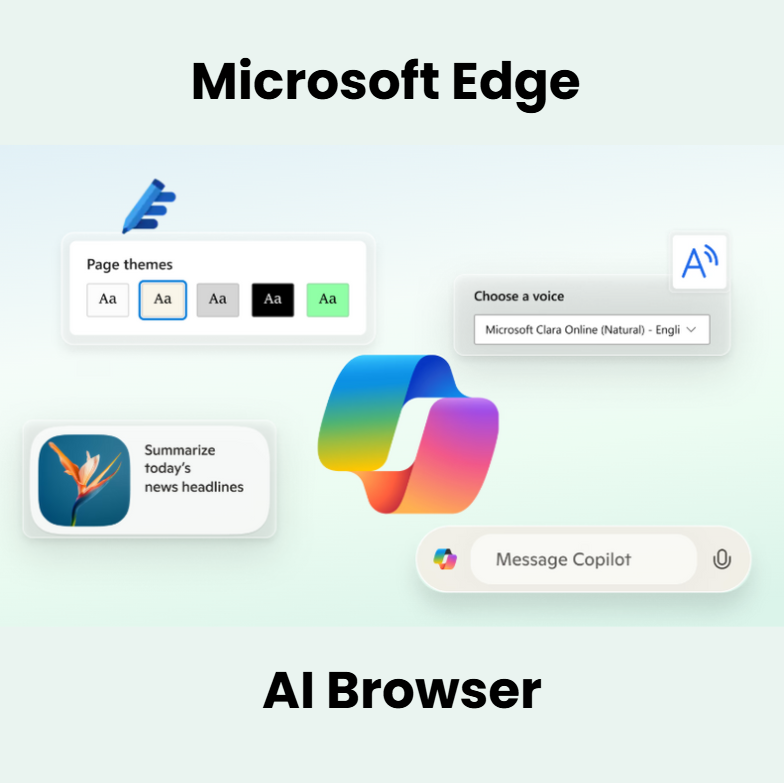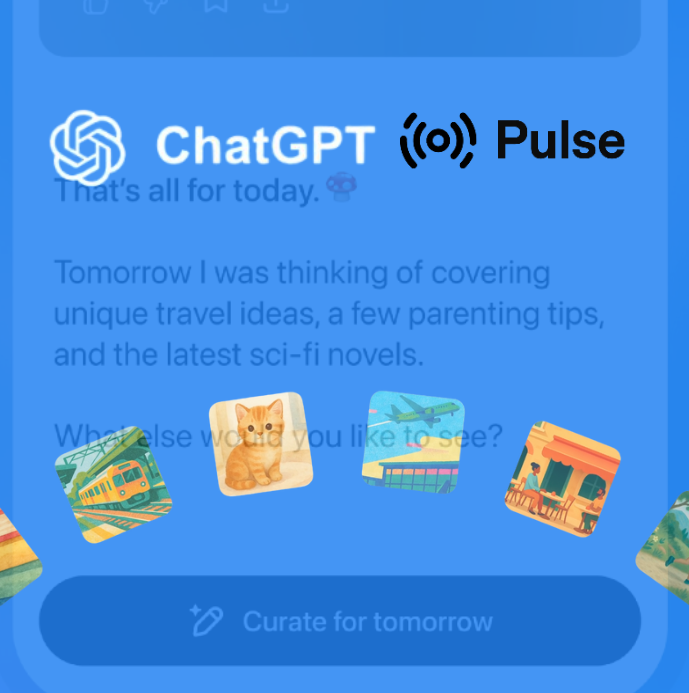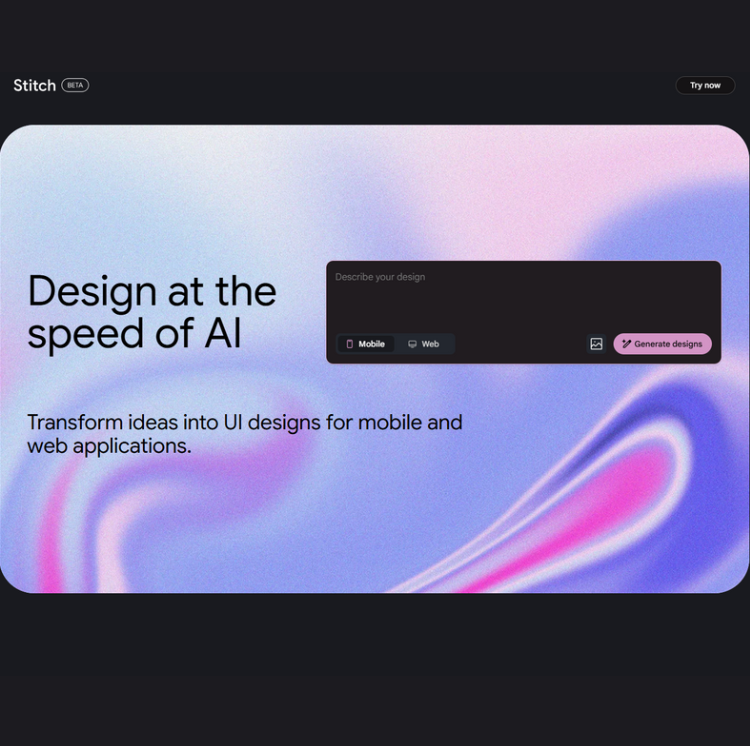
On July 28th, Microsoft flipped the switch on something new: Copilot Mode in the Edge browser.
Edge can now see what tabs you’ve got open (if you let it), help summarize, compare, explain, and even suggest what to do next - all from a single input bar.
Welcome to the era of the AI browser.
What Microsoft Is Saying
Microsoft is positioning this as more than a search upgrade - it’s an entire browser transformation.
According to the official blog, Copilot Mode is designed to help users “orchestrate tasks, not just complete them.”
They say the new Edge will:
-
Understand the context of your tabs and browsing session
-
Help you navigate multi-step tasks
-
Offer personalized assistance without needing to jump between tools
Here’s how Microsoft explains it:
“This is not about adding another AI assistant. It’s about evolving the browser into a partner that understands your intent and helps you act faster.”
They describe it as turning Edge into an “orchestration engine” - a place where search, chat, tabs, and actions all flow together in one AI-powered experience.
What It Means in Human Words
The new Edge is not what we used to call a browser.
Now it can see what’s on your screen, understand the context of your active tabs, and help you take action right where you are.
That means:
-
If you’re reading an article, it can summarize it.
-
If you have five product pages open, it can compare them.
-
If you’re replying to an email, it can suggest a full draft.
-
If you left a tab open from last week, it can pull it back into focus.
-
If you’re working across different tools, it can group them into one flow.
No more jumping between apps or copying text from one tab to another.
Edge keeps up with what you’re doing and helps you move faster.
Let’s Connect the Dots
In order to get the complete picture of what Microsoft Edge is all about, we need to understand more than how our browsing experience changed and what it can do for us.
Technology – What’s Actually Running Under the Hood
At the core of Copilot Mode in Edge is Microsoft’s Prometheus system - a framework that pulls in different large language models based on what you’re doing.
It’s not just one model.
It’s a combination of OpenAI’s GPT‑4 family:
-
GPT‑4 Turbo for fast and general tasks
-
GPT‑4o when voice or visuals are involved
-
GPT‑4 for deeper analysis or long-form content
Prometheus decides which one to use behind the scenes, depending on the action.
Microsoft is also testing a new Smart Mode that could bring in GPT‑5 - making the whole experience even more dynamic and context-aware.
Edge is now running on some of the most advanced LLMs available today.
Privacy and Security – What Happens With Your Data?
With a browser that sees what’s on your screen and responds to it, privacy becomes a real concern.
Microsoft says that your content stays local unless you explicitly send it to the cloud. That means actions like summarizing a web page or comparing open tabs are processed on your device when possible.
For cloud-based tasks, Microsoft claims it doesn’t use your data to train its models, and that user inputs are not stored long-term.
Still, there’s a line here.
This system works because it has access to what you're doing inside the browser.
That access is powerful-but it also depends on how much you trust the guardrails Microsoft put in place.
There’s no third-party access or ad-targeting (for now), but as Copilot features expand, privacy policies matter more than ever.
Competitors – Who Else Is Building an AI Browser?
Microsoft isn’t the only one trying to turn the browser into a full AI-powered workspace. Several others are racing in the same direction, each with their own approach.
Here’s a quick look at the main players:
|
Feature |
Microsoft Edge (Copilot Mode) |
Google Chrome + Gemini |
Arc Browser (Arc Max) |
Opera (Aria) |
|
Built-in AI |
Yes, integrated Copilot |
Gemini access in Workspace |
Arc Max with AI commands |
Aria (ChatGPT-based) |
|
Tab awareness |
Yes, reads and compares open tabs |
No |
Yes, with smart actions |
No |
|
Content actions |
Summarize, compare, generate text |
Mostly search or chat |
Rename tabs, organize |
Limited |
|
Workflow focus |
Yes – tasks grouped by context |
Not workflow-focused |
Yes – smart features |
No |
|
LLM used |
GPT‑4, GPT‑4o (via Prometheus) |
Gemini 1.5 Pro |
OpenAI (unclear version) |
ChatGPT |
|
Privacy model |
Local + cloud, user-controlled |
Cloud-based, tied to Google account |
Mostly local |
Cloud-based |
Right now, Microsoft Edge is the only browser offering full in-context AI that actively reads your tabs, tracks what you’re doing, and helps you act on it-all in one place.
Arc is catching attention with creative UI features.
Google has the muscle, but Gemini still lives mostly outside the browser.
Opera added Aria, but it’s more of a side feature.
This isn’t just a browser war anymore.
It’s a battle to define what the “AI workspace” actually looks like.
Bottom Line
Available: Rolling out now on Windows with the latest version of Microsoft Edge
Cost: Free with a Microsoft account
How to enable it: Go to Edge Settings → Copilot → Turn on Copilot Mode
System Requirements: Windows 11, Edge version 126 or higher
For more info click here
For the official announcement
Prompt It Up - Estimate and Calculate
Want to estimate and calculate how Microsoft Edge Copilot Mode could help you with what you're doing?
Here’s a prompt you can paste into any LLM to simulate it:
🧠 Prompt:
"Based on what I’ve been doing with you, how could Microsoft Edge Copilot Mode help me if I were using it right now? Please describe where it would assist, and estimate how many copy-paste actions it would save me."
This prompt helps you test Edge’s value in real tasks - whatever you’re working on.
It gives a simple way to see where Copilot might step in, offer help, and reduce manual effort.
Including how many steps you'd usually have to copy and paste.
Frozen Light Team Perspective
We believe it’s very clear that Microsoft has the better potential right now to offer a stronger experience when it comes to a new type of browser assistant.
Their core business for many years has been about creating, supporting, and leading the digital workspace as we know it.
So if anyone understands what we do and how we do it - it’s them.
When it comes to the future of browser assistance, there are two things at play.
The word “browser” itself comes from an older way of working.
Tabs, pages, summarization - it’s the past being pulled into the future.
And that’s not a bad thing. It’s still needed, and Microsoft is doing a better job than anyone at improving that part.
But there’s also something new happening.
We’re starting to see tools like Jony shift the focus.
Not just helping us browse, but changing the idea of work completely - acting on our behalf, opening software, finding answers, sometimes without us even seeing it happen.
You might not even have a browser window.
Just one screen - or maybe a new device, maybe a wearable.
Something that represents you, your tasks, your decisions.
A new digital representation of you.
We can’t say yet what will win.
But this moment, right now, feels like testing ground for what’s next.
And browsing might just be a middle step - helping gather the information needed to support what’s coming.








